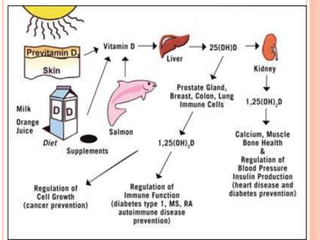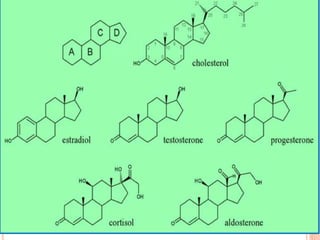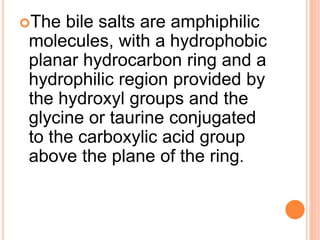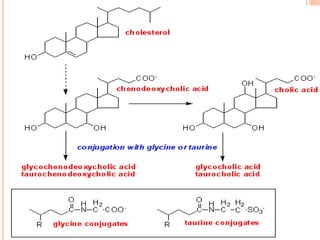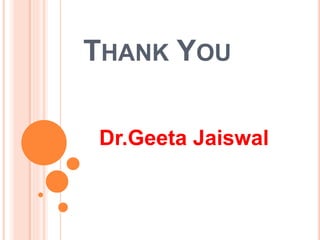Steroids are a class of lipids found in eukaryotic cell membranes and rarely in some bacteria. Cholesterol is a type of steroid or modified steroid that is an essential structural component of animal cell membranes. It is required to maintain membrane integrity and fluidity. Cholesterol also serves as a precursor for the biosynthesis of steroid hormones, bile acids, and vitamin D. Within cells, cholesterol is converted to bile salts which help to emulsify and absorb dietary fats in the small intestine. Bile salts are then reabsorbed and recycled through enterohepatic circulation.
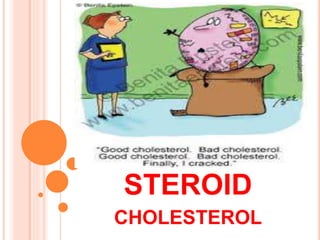

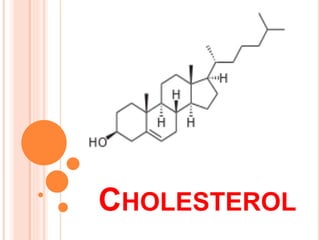
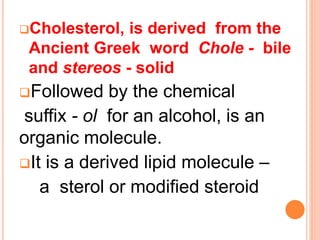
![IUPAC NAME[HIDE]
(3Β)-CHOLEST-5-EN-3-OL
Systematic name
2,15-dimethyl-14-(1,5-
dimethylhexyl)tetracyclo[8.
7.0.02,7.011,15]heptacos-7-
en-5-ol](https://image.slidesharecdn.com/cholesterol-170205142302/85/Cholesterol-5-320.jpg)
![OTHER NAMES
Cholesterin, Cholesteryl
alcohol
(10R,13R)-10,13-dimethyl-17-
(6-methylheptan-2-yl)-
2,3,4,7,8,9,11,12,14,15,16,17-
dodecahydro-1H-
cyclopenta[a]phenanthren-3-ol](https://image.slidesharecdn.com/cholesterol-170205142302/85/Cholesterol-6-320.jpg)
![PROPERTIES
Molecular formula C27H46O
Molar mass 386.65 g/mol
Appearance white crystalline powder[2]
Density 1.052 g/cm3
Melting point 148–150 °C[2]
Boiling point 360 °C (decomposes)
Solubility in water 0.095 mg/L (30 °C)
Solubility
soluble in acetone, benzene,
chloroform, ethanol, ether, hexane,
isopropyl myristate, methanol](https://image.slidesharecdn.com/cholesterol-170205142302/85/Cholesterol-7-320.jpg)








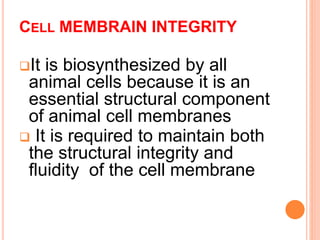
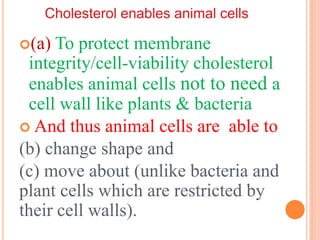






![Recently, cholesterol has also been
implicated in cell signalling processes,
assisting in the formation of lipid rafts in
the plasma membrane.
Lipid raft formation brings receptor
proteins in close proximity with high
concentrations of second messenger
molecules.]
In many neurons, a myelin sheath, rich in
cholesterol, since it is derived from
compacted layers of Schwann cell
membrane, provides insulation for more
efficient conduction of impulses.](https://image.slidesharecdn.com/cholesterol-170205142302/85/Cholesterol-24-320.jpg)





